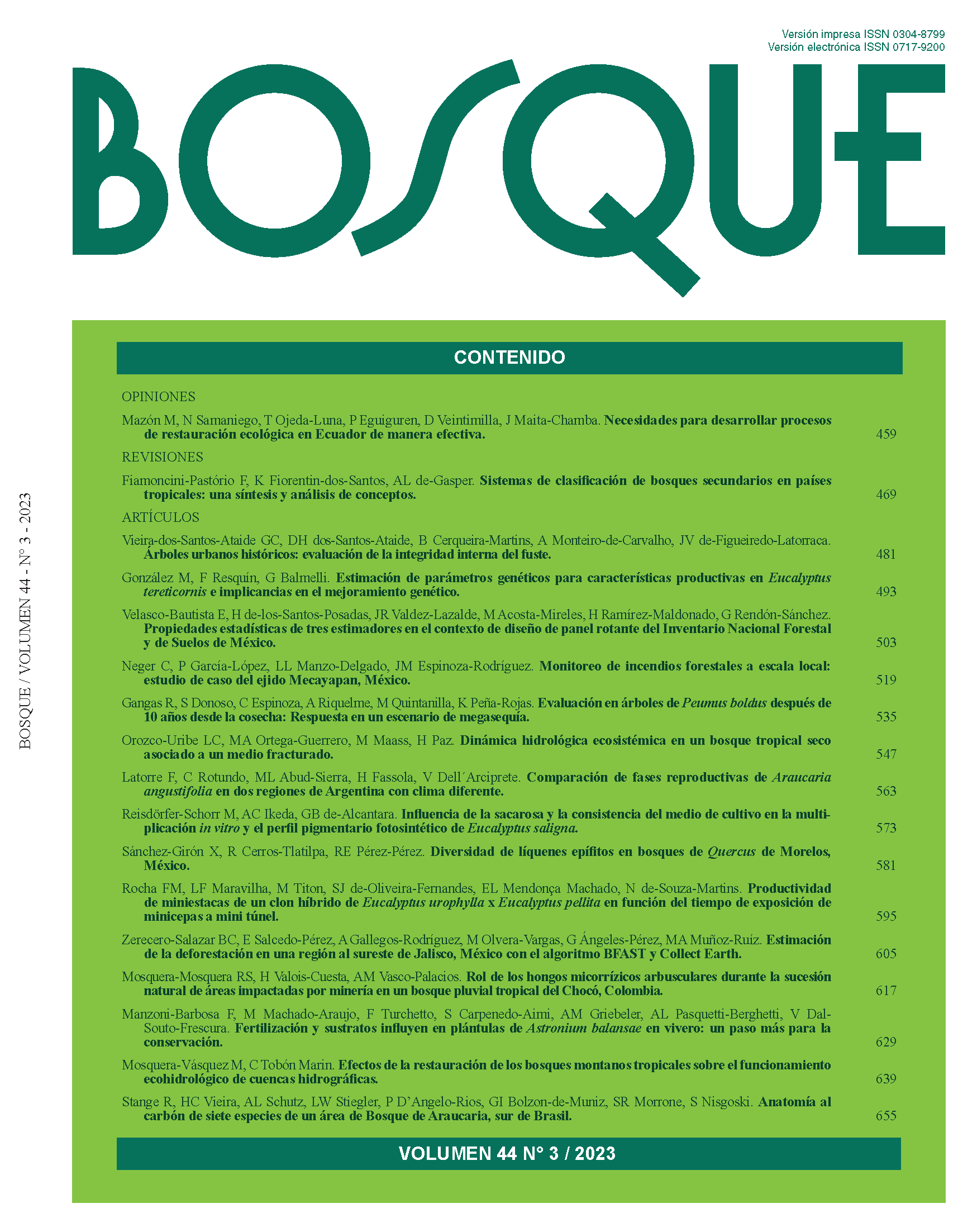Hydrological ecosystem dynamics in a tropical dry forest associated with a fractured environment
Main Article Content
Abstract
Tropical dry forests (TDF's) are seasonal ecosystems that develop under complex hydrological systems. We analyzed the hydrological processes in three micro-basins on the southern coast of the state of Jalisco, Mexico, which sustain a TDF in a state of conservation on fractured granite. Although there is available information spanning more than 40 years regarding their physical and biotic dynamics, little is known about the functioning of their groundwater. The analysis was conducted using the following methods: 1) LiDAR images and fieldwork, 2) vegetation distribution and characterization of the fractured environment; 3) automated measurements of the precipitation-runoff response; 4) numerical simulations of the soil used to study the process of infiltration towards the fractured medium, and 5) integration and synthesis of existing multidisciplinary knowledge which includes key ecosystem components constituting the physiology of the soil-plant-atmosphere continuum. The results indicate that the distribution of vegetation and its phenology follow patterns suggesting the existence of local underground flows. Furthermore, the process of infiltration through the soil is remarkably fast towards the fractured rock, resulting in base flow in the streams. Consequently, the levels of infiltration and groundwater recharge are greater than previously considered. We propose a conceptual model of groundwater movement to guide research on ecosystem hydrology in seasonal contexts and in fractured rock environments.


 https://orcid.org/0000-0001-7831-1405
https://orcid.org/0000-0001-7831-1405